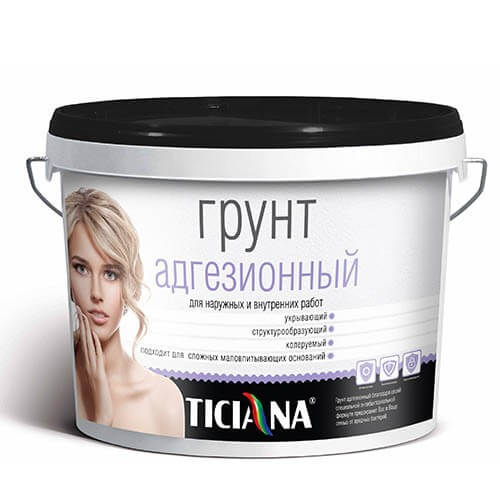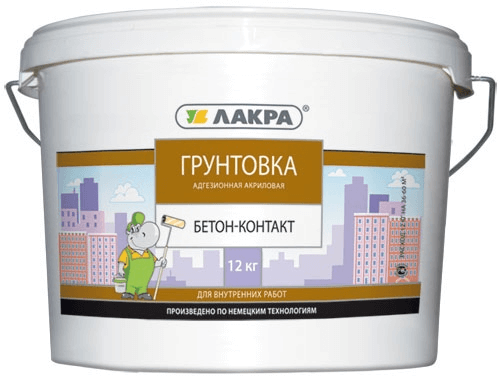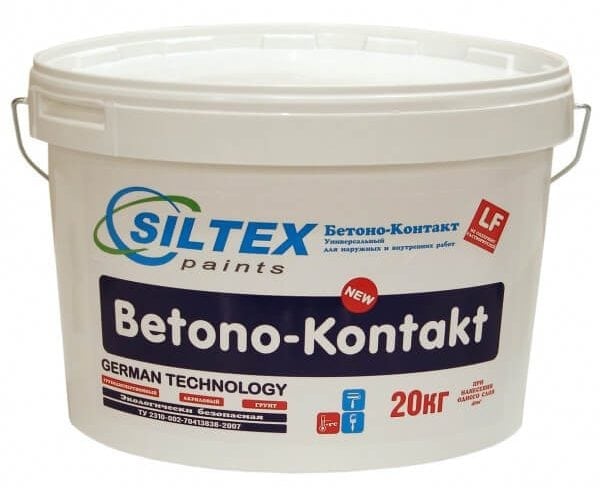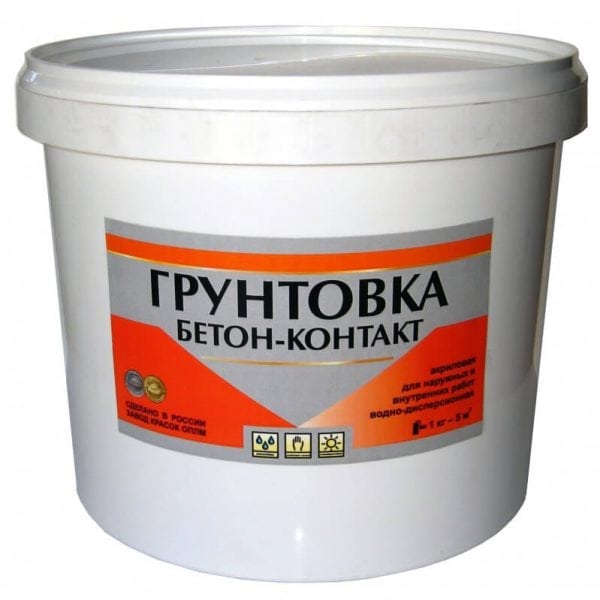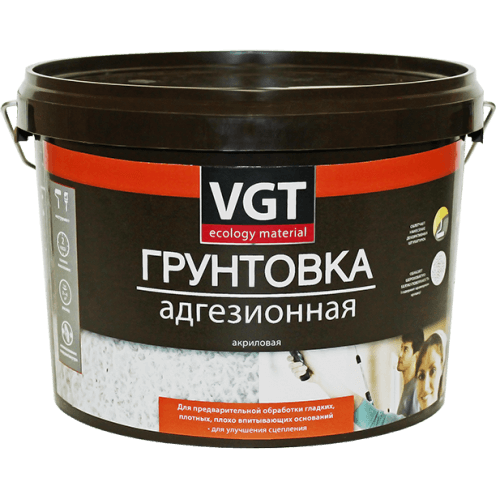Adhesive primer is a special solution that is used to improve the adhesion of the surface to finishing materials. In order to understand how important it is to use such a primer during repair and finishing work, it is worth understanding what functions it performs.
- Primer differences by composition
- Application primer differences
- Porous surface primer
- Primer for low porous and smooth surfaces
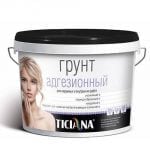
Many believe that the main objective of this soil is to improve adhesion between building materials. However, such a solution has several more important functions, the main of which are:
- protection of metal surfaces from the occurrence of corrosion processes;
- preventing the formation of fungus and mold;
- increasing the strength of porous and cracked surfaces;
- decrease in the degree of moisture absorption.
Primer differences by composition
In order to correctly determine the choice of the most suitable solution for surface treatment, one should take into account not only the type of materials with which it is supposed to work, but also the composition of the protective soil of one or another brand. Today, according to the type of composition, primer mixtures are divided into:
- Acrylic Such primer mixes consist of a suspension of special acrylic resins and additional additives that contribute to the rapid hardening and uniform application of the solution. Acrylic primers do not emit an unpleasant odor, so they can be used without stopping the repair and finishing work in any living room. Depending on the brand, an adhesive acrylic primer can be used both for internal and external finishing work.
- Alkyd. This type of primer is used to treat almost all poorly absorbed surfaces. The composition of such a solution includes organic solvents, so it can be used for interior and exterior decoration of any residential premises.
- Glifthal. Ideal for wood and metal surfaces. Such mixtures have excellent antiseptic and anticorrosive properties. The composition of such solutions includes coloring pigments, therefore, having correctly selected the color of the soil, it is possible to further enhance the color rendering of the paintwork.
- Perchlorovinyl. Like acrylic, such a primer can be used to treat almost any surface. However, it should be borne in mind that the composition of such a solution includes a huge amount of substances harmful to human health, so if possible it is best used for outdoor work.
to contents ↑
Application primer differences
Modern manufacturers of finishing materials offer consumers a wide range of primers, which have various specifications and a narrow scope.
Porous surface primer
The adhesive primer concrete contact provides complete protection of the treated surface, and also further enhances its strength due to the high degree of permeability. The solution completely fills all the pores and microcracks of the concrete screed and, if applied correctly, can even glue building dust, providing the best possible adhesion to any finishing materials.
When hardening, the primer forms a protective layer in the form of a thin but strong film that prevents moisture absorption, thereby significantly reducing the cost of adhesive mixtures and coatings.
The concrete contact primer is highly alkaline and contains quartz sand. When hardening, the solution creates a rough protective layer on the treated surface, which contributes to the maximum improvement in adhesion with any kind of finishing materials. In order to improve the strength of the protective film of the adhesive primer, it is necessary to apply the solution to the surface at least two times.
As a rule, concrete contact primer incorporates coloring pigments, which allow you to visually determine which places on the surface of the ceiling, walls and floor have already been processed and which are not. The solution for porous surfaces is most often made on a water basis, which makes it possible to use it in rooms of any purpose.
At room temperature, the soil dries completely in a few hours and creates a thin invisible film on the treated surface. Concrete contact primer can be applied either using a special spray gun or using a roller and a set of brushes. For a better result, after drying the first layer of soil should be applied the second.
to contents ↑Primer for low porous and smooth surfaces
The main objective of such solutions is to ensure maximum adhesion between materials with a smooth surface, which has a minimum degree of moisture absorption. Most often, this type of primer is used to process materials such as glass, plastic, metal, paintwork.
Such an adhesive primer for interior use can be used if it is necessary to plaster a previously painted surface. When hardening, the solution will roughen the treated surface, due to which the adhesion to the plaster will be of optimum quality, which eliminates the likelihood of it slipping or cracking.
The composition of such primer mixtures most often includes special components that prevent the occurrence of corrosion and the development of fungi. Some grades of soil for smooth surfaces are able to stop the process of metal rusting, so they are used to process welded iron floors in warehouses and industrial premises.
Adhesive primer is a multifunctional tool that not only significantly improves the adhesion of facing materials, but also maximizes the service life of the treated surface, preventing the occurrence of corrosion, mold and premature failure.

